How to prune an apple tree in the fall: terms, rules and schemes
One of the key measures for caring for an apple tree is to properly prune it in the fall. As you know, pruning increases yields and improves fruit quality. In addition, it enhances growth, thereby increasing the number of fruits, and contributes to abundant annual fruiting.
This material is devoted to why pruning is specifically necessary, when and how it is optimal to carry out in the fall, as well as to the schemes and rules for the formation of apple trees.
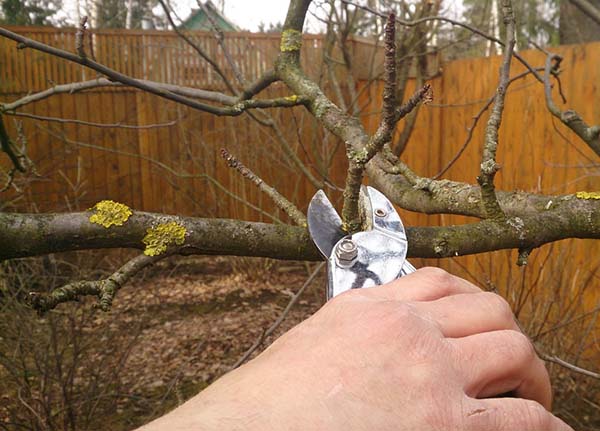
Content
Why cut an apple tree
When performing any procedure for caring for a plant, you need to know its purpose. So the ultimate goal of pruning is to increase the quantity and quality of the crop.
Thus, by pruning an apple tree, you solve the following tasks:
- improving access to sunlight;
- providing better ventilation inside the crown;
- disease prevention;
- correct crown formation;
- convenient harvesting.
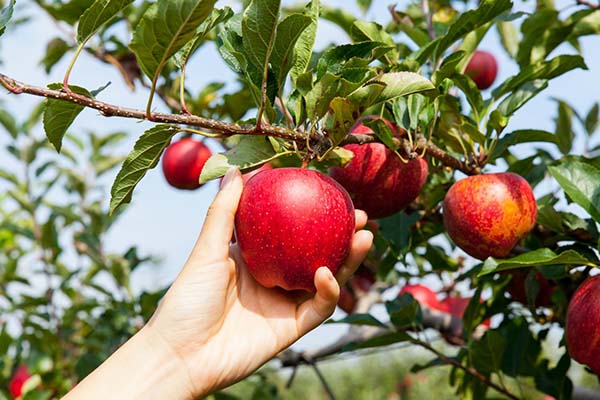
Optimal timing of pruning apple trees in autumn
Autumn pruning of the apple tree can be started when all the leaves of the tree completely fall off. In this case, it is important that the air temperature is positive. The fact is that pruning must be completely stopped already at a temperature of -5 degrees, since the wood freezes and becomes brittle and fragile.
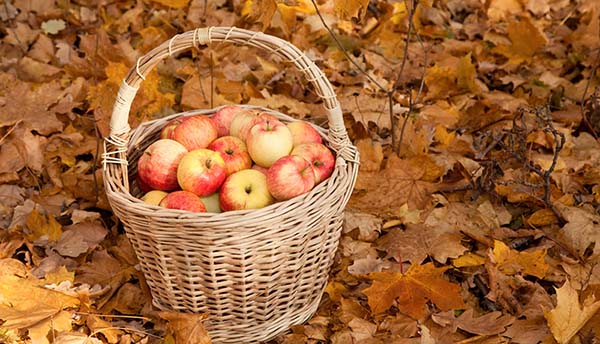
Thus, the approximate timing of apple pruning in autumn in the middle lane (Moscow region) is the second half of September - the first half of October, in the South of Russia - October - the first half of November. In more northern and colder regions (in the Urals and in Siberia), as a rule, autumn pruning is not carried out, since the cuts may simply not have time to drag on before the arrival of severe frosts.
When is the best time to prune - in autumn or spring
It should be understood that autumn pruning weakens all trees, their winter hardiness decreases. Therefore, it is believed that only winter-hardy breeds can be cut in autumn, which tolerate frost well and are not at all afraid of freezing.
Note! There is an opinion (controversial) that only pome crops (apples, pears) can be cut in autumn, but stone fruits (peaches, apricots, plums, cherries) - only in spring.
However, according to most agronomists, the best time to prune fruit trees is early spring, and you need to catch the moment before the active sap flow begins. In addition, the shorter the time between pruning and the start of sap flow, the better. In addition to conserving energy, with the beginning of sap flow, the tree's own defense mechanisms "turn on", and pathogenic organisms have practically no chance to penetrate into the "tree system".
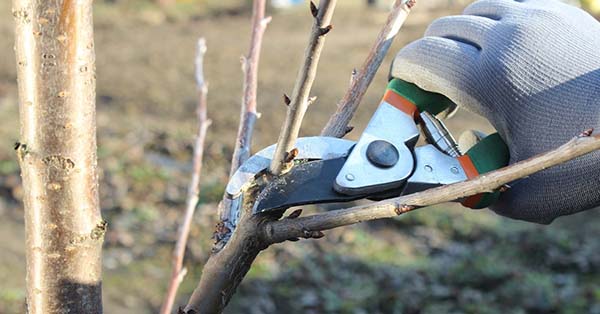
And in the fall, on the contrary, trees suspend any active defense (their own defense mechanisms), while fungal spores fly in myriads. In addition, at the onset of frost, the cambium freezes over, and wound healing is difficult.
Thus, it is better to prune the apple tree in the spring; they resort to autumn pruning only if you have little time in the spring, or / and the variety is quite frost-resistant.
How to prune an apple tree in autumn
Every novice gardener should be able to properly prune an apple tree, and for this, first of all, you need to acquire the required tools and keep them in proper condition.
Required tools
To carry out work on pruning an apple tree, you will need the following tools and products for treating wounds after pruning:
- regular hand pruner (for thin branches);
- garden knife (for very thin branches and removal of burrs);
- garden saw-hacksaw (for thick branches);
- secateurs with long handles (for upper branches);
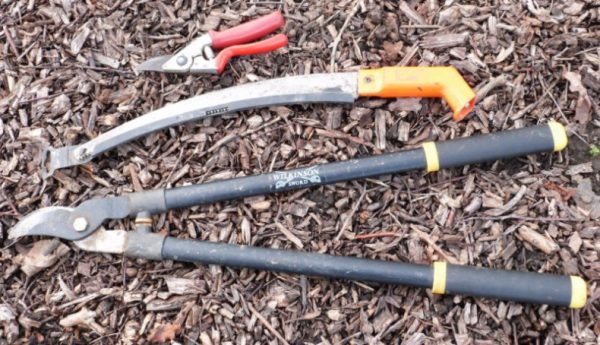
- stepladder (for the convenience of removing the upper branches);
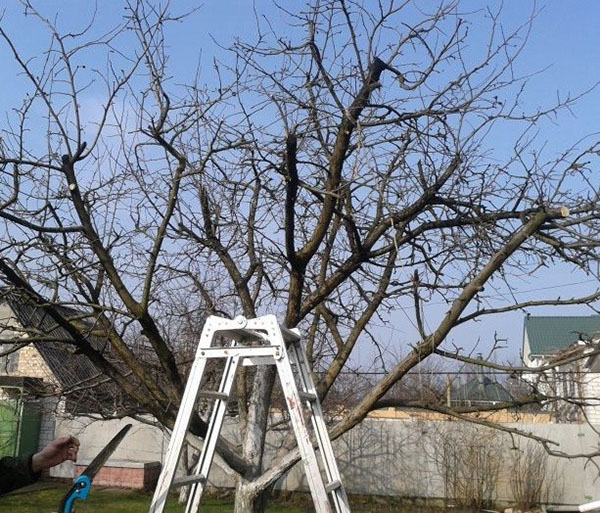
- oil paint (based on drying oil), or garden var or "Rannet".
Advice! The entire tool must be well sharpened.
Pruning rules
In order not to harm the plant instead of benefit, you must strictly follow the rules for pruning an apple tree in the fall.
Note! In order to carry out pruning according to all the rules, you need to know the structure of the tree, so first you should study and understand its structure:
What branches of the apple tree need to be removed and pruned in the fall:
- All are subject to pruning broken, dry and diseased branches (sanitary pruning);
Important! Wherein diseased should be trimmed to healthy wood.
- Are subject to removal all tops (vertical shoots).
- Need to cut regularly all shoots below the first tier.
- You also need to get rid of everyone crooked branches (growing through other branches or crossing) and from branches growing inside the crownthat shade good branches.
- Absolutely unnecessary branches growing at a very acute angle (ie, the angle of departure less than 40-45 degrees) and forming "forks", they are also cut out (due to the load of fruits, the branch may crack).
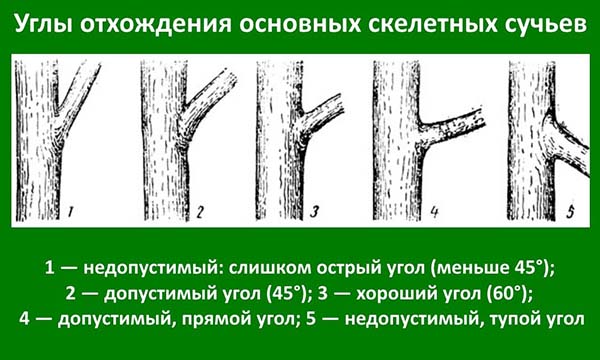
In short, pruning all unnecessary and interfering branchesthat shade the crown and make it difficult to ventilate the tree (thinning pruning).
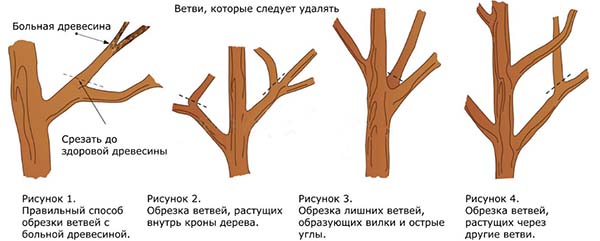
- For better branching and stimulation of fruit formations, all continuation branches should be shortened "per bud" (according to the principle of subordination of branches).
Note! There is no need to shorten the already short branches (35-40 cm), on the tips of which there are flower (fruit) buds - they have the whole harvest on them. Long (more than 40-50 cm) growth branches (with growth buds) are subject to pruning.
- Also very important leave no competing branches (or thus replace old ones with new ones), cutting them off "for translation."
Interesting! Thus, by trimming the tree, you can change the direction of its branching.Namely, it is necessary that the apple tree horizontal branches predominated, from vertical you need to either get rid of completely, or artificiallyredirect the direction of their branching.
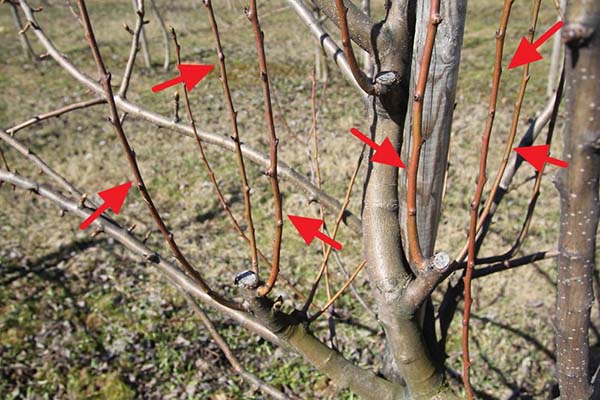
How to trim properly apple tree:
Advice! Pruning shear blade or a lopper should be always below.
Wrong, if the pruner facing the shoot with the focus down, not a blade.
- When you delete full branch, then trimming is done "On the ring"when cut only partthen "Kidney".
- The essence of kidney pruning lies in the fact that when you, for example, thin out the crown, it is not at all necessary to cut a young branch completely, it is much more efficient to cut it to the outer bud in order to change the direction of its growth. In this case, it is necessary to cut in such a way that the top of the cut reaches the top of the kidney, and the base of the cut is at the level of the base of the kidney. Then the cut will heal well.
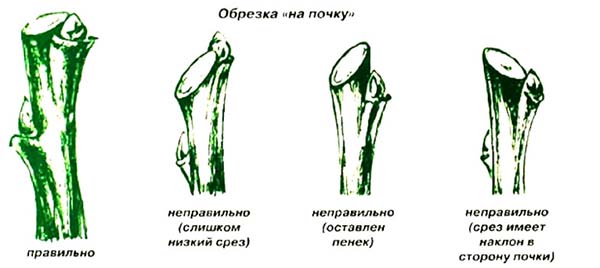
- Cutting "to the ring". The point is that you need to cut the branches along the trunk, more precisely, the cut line should go along the bisector between the axis of the trunk and the line perpendicular to the branch (along the annular sag);
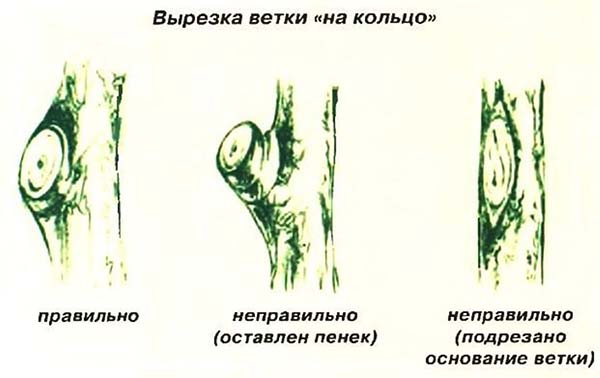
Important! When pruning old and thick branches on the "ring" follow the rule of three cuts (cuts):
- It is always necessary to cut a branch from the bottom, otherwise it can break under its own weight (weight), due to which a bark seizure forms (similar to a torn burr on a finger). Thus, during the first spill, the branch is cut by 1/3.
- The next cut is already done from above, while noticeably higher than the first. As a result, the branch is cut off completely (otherwise, it may break off).
- As a result, you will have a stump, which will need to be cut down with the third cut, while making it from above exactly "along the ring" (perpendicular to the branch trunk), leaving an annular overlay.
If any burrs remain, they should be trimmed with a sharp garden knife.
This is the only way you get a neat and correct cut.
- Prune branches "On the ring" need to only "for translation", t. That is, on a branch or shoot, which will further provide the cut with nutrients and heal it. The branch (shoot) of the supply should be no thinner than 1/3 of the cut diameter. If it is thinner, then it is recommended to graft (implant) additional cuttings along the periphery of the cut (at a distance of at least 7 cm from each other). When they take root, they will act as branches of supply, protect and help heal the wound.
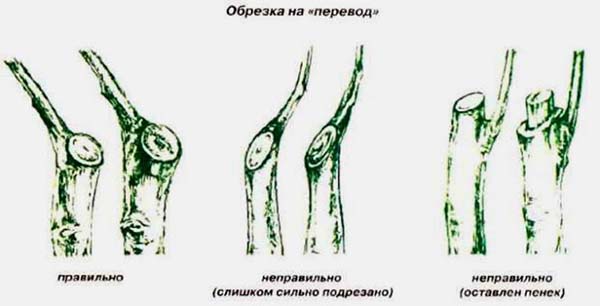
- No more than 1/3 of the crown can be cut at a time, especially for old trees, including when they are "rejuvenated".
Note! It is very important to observe the principle of subordination of branches, that is, all side branches (skeletal branches) obey the guide (central trunk) and should not be higher than it. This also applies to growth on skeletal branches.
By the way! By the appearance of the cuts, you can assess the condition of your apple tree, how it overwintered. If the cut of a young shoot is light green, without brown or brownish spots, then the tree has survived the winter perfectly, without freezing.
Rules for the treatment of wounds (sections) after pruning the apple tree in autumn:
- So that moisture does not get into the cut and rotting does not begin, it should be covered with a special tool, as a rule, garden var is used.
Important! According to some gardeners, garden var is more harmful than beneficial. Now a more effective and useful remedy for treating wounds after pruning is the "RanNet" garden paste-putty. However, it is in autumn, oil paint treatment will be more effectivesince garden var and "RanNet" paste freeze and peel off at the onset of frost.
- The smaller the cut area, the easier it is for the tree to heal the wound. If a cut with a diameter of up to 3 cm, then it is not smeared at all, for large ones, only the edge needs to be processed to protect the cambium from drying out.
- It is especially important to cover up large sliceswhich are made "on the ring "on skeletal branches or on a trunk. When pruning "Kidney" the cut diameter is small enough and does not need processing.
Video: how to properly prune an apple tree in autumn - crown formation
How to prune old and young apple trees: shaping and rejuvenating pruning
Depending on the age of the trees, the options for pruning them differ - the formation of a young apple tree and the rejuvenation of the old culture.
How to shape an apple tree: pruning a 1, 2, 3, 4 year old tree
As a rule, a young apple tree is formed every spring, but autumn formative pruning is also allowed.
Note! Which branches to delete, and which ones to leave, exactly how to prune them - everything is described in the previous paragraph "Pruning rules".
Pruning an apple tree by year in autumn or spring is performed as follows (discharged-tiered formation):
Advice! During the formation period, do not forget about sanitary and thinning scraps.
- the next year after planting (or immediately after planting) - the main branch (central conductor) is cut off, or rather the top is 3-4 buds (leave a height of 80-100 cm) so that lateral branches are formed near the tree, in other words, the first tier is formed.
- for 2 years - lateral branches are formed at the tree, which should be cut off by 1/4 of their length (to the outer bud), and only 3-4 of the strongest should be left, growing horizontally in different directions, and the rest should be cut into a ring. You should also cut the top of the central trunk (conductor) to a height of 50-80 cm from the branching of the first tier, so that the next (second) tier of skeletal branches begins to form.
Worth knowing! The distance between tiers of skeletal branches should be approximately 50-80 cm between the first and second tier and 30-50 cm between the second and third. Between the branches themselves in one tier - 10 cm.
- for 3 years - the lateral branches are again cut by 1/3 of the length, as well as the young growth (branches of the second order) on these branches, again by 1/3, "per bud". In addition, you need to leave 3-4 branches of the second tier, cutting them by 1/3. The top of the central trunk is trimmed again, but already 30-50 centimeters from the second tier, so that the next (third) tier is formed.
The central conductor (main trunk) must be one, therefore all its competitors must be cut off "on the ring".
- for 4 years - the last year of the apple tree formation (if you form in 3 tiers). Everything is done similarly to the previous year (the continuation shoots are shortened and the side branches are cut off), with one exception - if 3 tiers are enough for you, then the top is cut "into a ring" and transferred to a side branch.
- For 5 years and beyond it is already necessary to carry out anti-aging pruning, also do not forget about sanitary and thinning.
Advice! The optimal height of a tree from which it is convenient to harvest is no more than 3.5-4 meters.
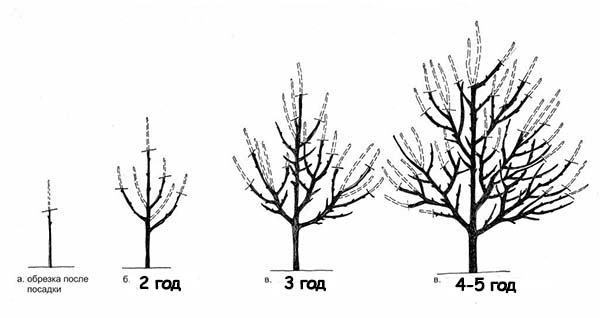
Important! Don't forget in the fall whitewash apple trees, especially young people, because they still have a thin bark and it can easily burn. They are bleached to protect against sunburn, especially at the end of winter, when trees on the south side receive an increased dose of solar insolation directly from the sun, and besides, it is reflected from the snow. You can, of course, not whitewash, but shade it from the south side, for example, with a wide board, or wrap it in nonwoven material (spunbond).
Rejuvenating the old apple tree
The essence of rejuvenating apple pruning is that old branches are replaced with new, more fertile ones.
Important! Moreover, the rejuvenation of old trees (over 5 years old) should be carried out gradually, over several years. In other words, pruning should be moderate; you don't need to cut out everything listed below in the first year.
Step-by-step instructions for pruning an old apple tree in the fall:
- First of all, all broken, dry and diseased branches are subject to removal.
- Get rid of the lower branches that literally hang off the ground.
- Cut all unnecessary and interfering branches that obscure the crown (growing inside the crown, crossing, competing, growing with a "fork") completely cut "on a ring".
- Get rid of tops (vertical branches), again "on the ring".
- Pinch (cut to the "bud") all young shoots, the height of which is more than 40-50 cm.
Remember! It is only necessary to prune "for a ring" by removing "for transfer" (for lateral branching), this is how old branches are replaced by younger ones = rejuvenating pruning.
Video: how to reduce the crown of an apple tree by pruning for lateral branching
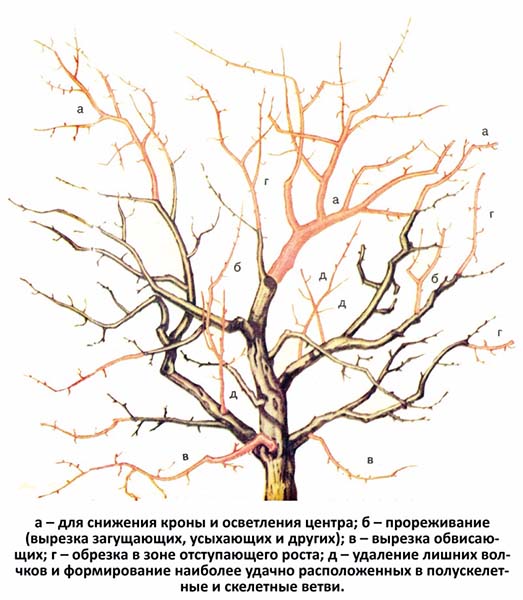
Video: how to prune an old and neglected tree (apple tree)
By the way! However, there is the cardinal way to rejuvenate a very old apple tree... The tree is cut completely at a height of about 1 meter (the cut is made obliquely). Further, lateral growths begin to appear, which in the future will become skeletal branches and make up a new crown.
Popular mistakes during the autumn pruning of apple trees among beginners
The most common mistake when pruning apple and other fruit trees is removing"On the kidney", when the autumn pruning is performed either below the bud (in which case it may freeze out), or too large a stump is left (which simply does not heal, it can rot and an infection will surely get through it). Correct cut must be done just above the kidney, wherein bud should be at the level bottom cut.
The same goes for trimming "On the ring"when too much foam is left, on which completely useless branches then grow, only taking away strength from the tree, the more the stump itself gradually begins to rot, its bark peels off. But you can't (it's even more dangerous) and cut too low, with the ring removed.
Other common mistakes beginners make when pruning an apple tree:
- Pruning is carried out in wrong timing... The worst time for pruning is in the middle of summer, so if you carry out the procedure at this time, then you can permanently weaken the tree and slow down its growth. It is allowed in the fall (after leaf fall), but it is optimal in early spring before bud break.
- Not cut broken, dry and diseased branches.
- Remains too many extra branchesthat shade the crown.
- It is impossible scratch out a hollow "to healthy wood", hammer it with bricks or something also, for example, fill with concrete, foam, etc. Filling on the contrary, it accelerates the decay of the trunk wood and shortens the life of the tree.
- No need for special prune old branches on which mosses and lichens.
But if thin branches of trees are covered with moss, then rejuvenating pruning of the entire tree (especially old branches) is needed.
Video: classic mistakes when pruning an apple tree from novice gardeners
Using the optimal pruning time, studying the appropriate schemes for removing excess shoots and observing the rules for the formation of apple trees depending on age will help to reveal the secret of correct pruning in autumn.
Video: how to prune an apple tree in autumn


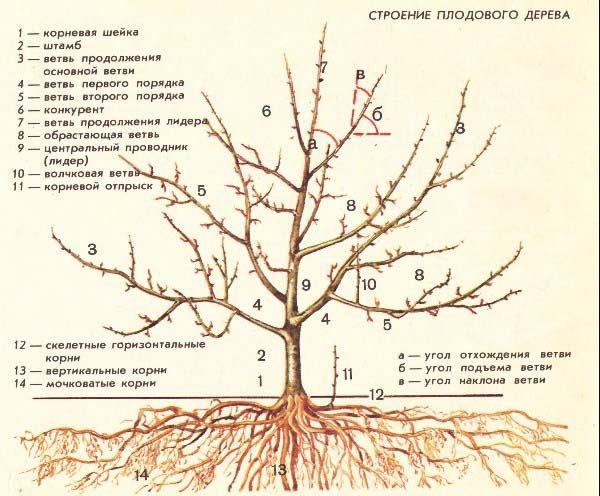
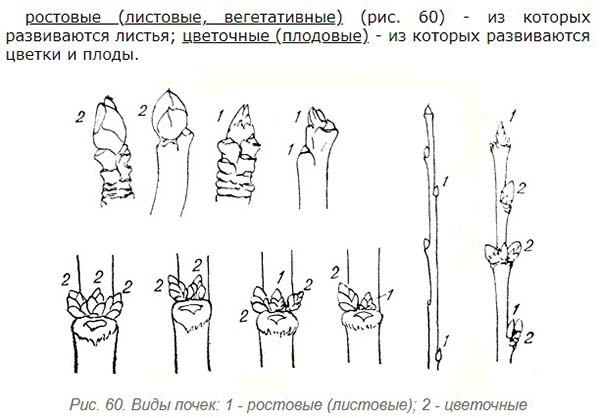
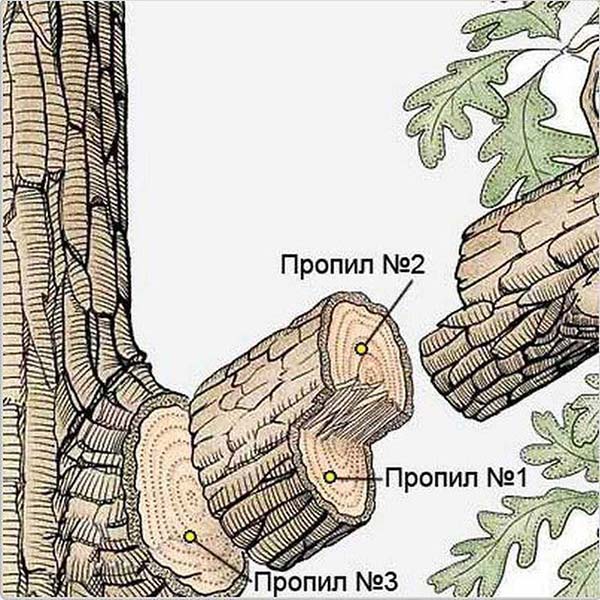
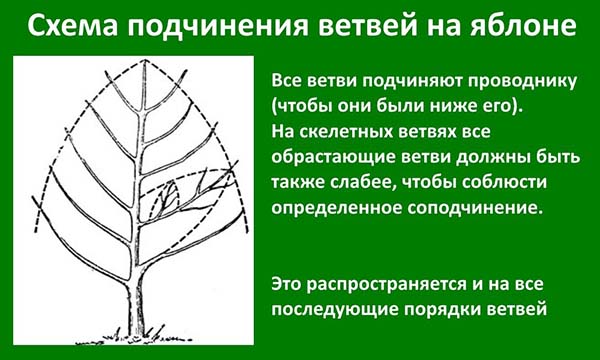
The article is just great! Everything is clear, even for a novice gardener. Thank you very much.